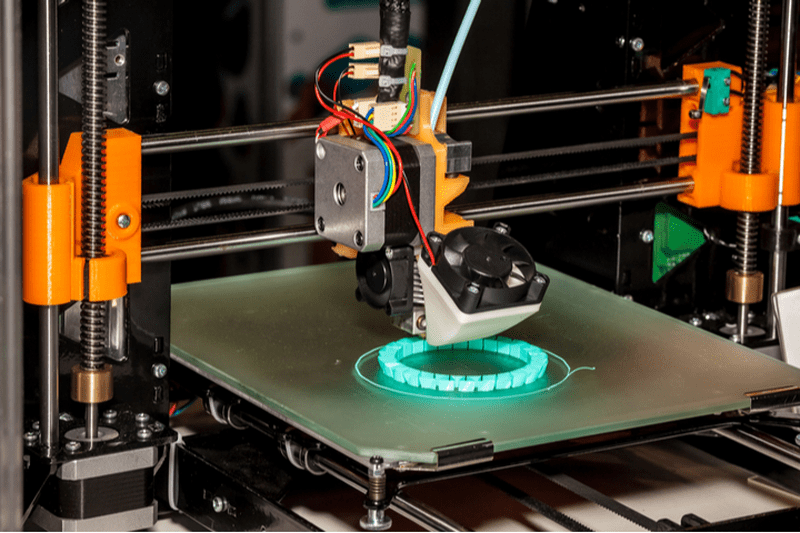Are we completely and unequivocally dependent on the oil and gas industry? Yes. In fact, the global demand for crude oil observed was more than 99 million barrels per day in 2018 and the demand is increasing every year. While many countries want to end their addiction to oil, the shale gas revolution compels countries to look for more basins to boost production.
Over the last few years, technology has become an inseparable part of every industry and major market players, such as Shell and BP, are relying on it more and more. The advent of 3D printing in the oil and gas industry is one such example.
The introduction of 3D printing in the industry turned into a blessing for product development. With the increasing demand for prototyping, companies expect faster production of their designs and an accelerated design process. Fast prototyping holds the highest importance in the oil and gas industry and 3D printing helps speed up the process.
According to Allied Market Research, the global 3D printing in the oil and gas market is expected to gain more traction in the coming years. The fast prototyping, reduction in downtime, and reduction in delivery lead times are the major drivers for the increased popularity of 3D printing in the oil and gas market.
What are the Prime Challenges?
Although the innovations in 3D printing technology could make a profound effect on the oil and gas industry, there are many challenges that we need to overcome. For the successful incorporation of 3D printing, input from the field workers is vital. Furthermore, the initial stage involves the identification of those parts that could benefit from 3D printing.
On the other hand, there is a question of legal and regulations as 3D printing injects efficiencies into parts acquisition and distribution. Thus, it could be challenging to complete the transition from using 3D printing for prototyping to using it in the actual production of industrial parts. Moreover, the end product must meet the safety standards and robust performance similar to conventional parts.
What are the Major Opportunities?
1. Fast Production
The most obvious benefit of additive manufacturing is its ability to give momentum to the product development process. Using additive manufacturing, engineers and product designers can visualize, validate, and develop their designs and cost-effectively. Moreover, in the oil and gas industry, it can be leveraged to unlock new opportunities and forecast any potential risks at the design stage itself before production.
There is already precedent in the market. Last year, Siemens launched its Additive Manufacturing Network, which is a cloud-based solution that enables collaboration between suppliers and engineers for the creation of 3D printed parts. Siemens’ oil and gas division and ASME (American Society of Mechanical Engineers) together developed additive manufacturing training services that could be provided through Material Solutions.
2. Economical Low-volume Production
Compared to other industries such as healthcare, the oil and gas market has been a bit slow to adopt additive manufacturing. However, the technology holds great potential. It is evident that conventional manufacturing is unsuitable for low-volume production, due to high tooling costs and the need for long lead times. On the contrary, 3D technology could help to cut down lead times by delivering parts in days instead of weeks and lowing production costs.
Moreover, 3D printing could be used to manufacture complex and specially-designed parts in small quantities while using materials efficiently. Most of the companies have realized this potential of 3D printing technology and have been using it to manufacture valves, pumps, turbomachinery, and gas turbine nozzles.
3. Simplifying Supply Chain
3D printing could show a profitable impact on supply chain management as well. The increase in a shift toward on-demand production of spare parts. This is beneficial for the offshore regions where the supply of replacement parts is limited and logistical issues cause delays. 3D printing to produce parts at request could help reduce the time and expense related to the replacement of spare parts.
On the other hand, the oil and gas operators require to maintain large inventories of spare parts to deal with unpredicted downtime. Using 3D printing technology, most of the spare parts can be reverse engineered to create on-demand digital inventory. This reduces both storage costs and warehouse stock.
That being said, 3D printing could help the market players in the oil and gas industry to streamline the operational process and cut down manufacturing costs significantly. Moreover, it could help new, more efficient ways to manufacture and maintain equipment. In a matter of years, 3D printing in the oil and gas market would be the norm, dominating the production as well as the supply chain.
In fact, over the coming years, several applications and opportunities would create themselves with the use of 3D printing technology. Moreover, the oil and gas industry would be more open to 3D printing technology than ever.
Headline photo courtesy of Allied Market Research
Swamini Kulkarni holds a bachelor’s degree in Instrumentation and control engineering from Pune University and works as a content writer. She is deeply fascinated by the impact of technology on human life and loves to talk about science and mythology. When she is not glued to the computer, she loves to read, travel, and spend time thinking about how she could read and travel more often.






